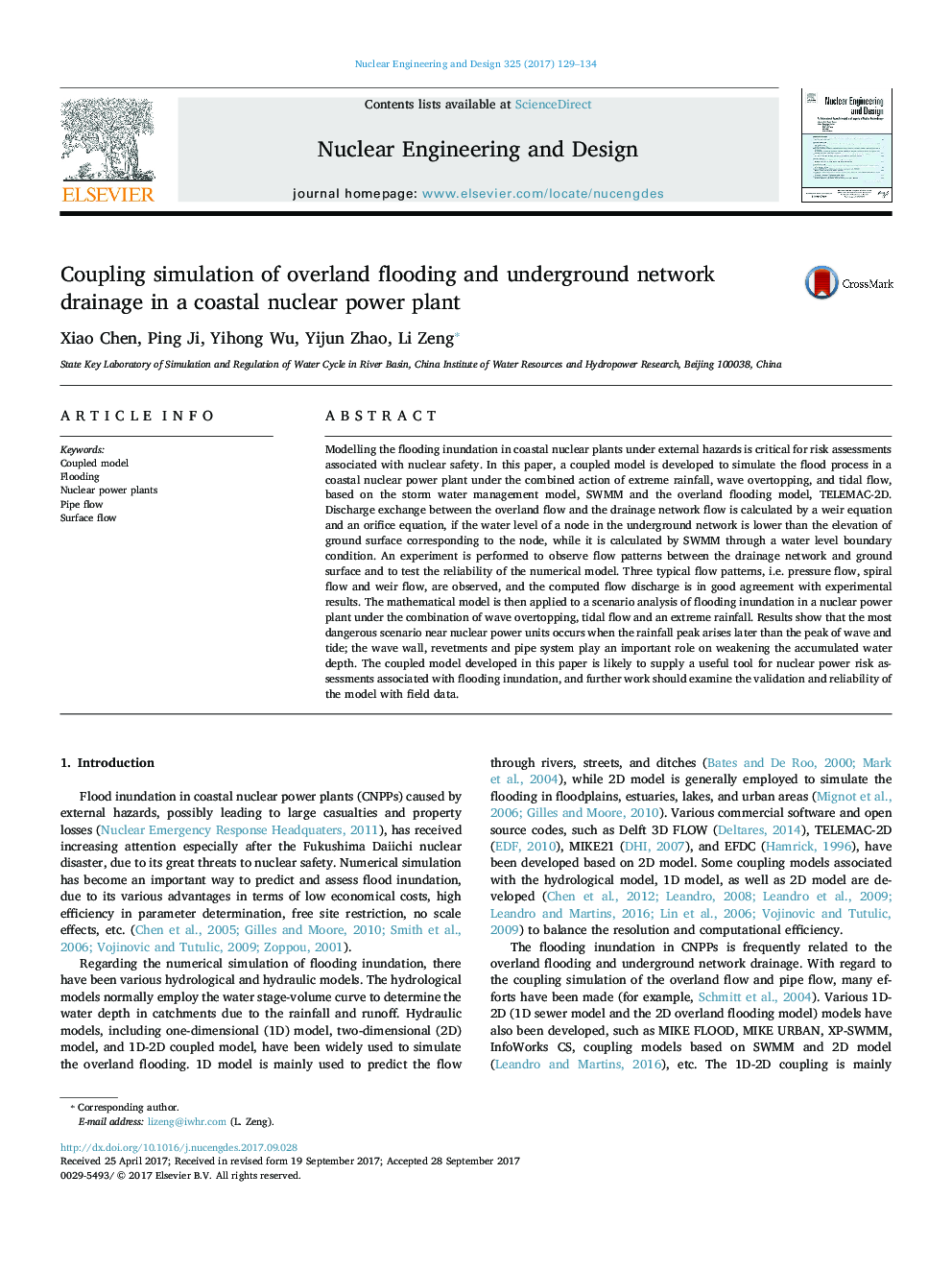| Article ID | Journal | Published Year | Pages | File Type |
|---|---|---|---|---|
| 4925267 | Nuclear Engineering and Design | 2017 | 6 Pages |
Abstract
Modelling the flooding inundation in coastal nuclear plants under external hazards is critical for risk assessments associated with nuclear safety. In this paper, a coupled model is developed to simulate the flood process in a coastal nuclear power plant under the combined action of extreme rainfall, wave overtopping, and tidal flow, based on the storm water management model, SWMM and the overland flooding model, TELEMAC-2D. Discharge exchange between the overland flow and the drainage network flow is calculated by a weir equation and an orifice equation, if the water level of a node in the underground network is lower than the elevation of ground surface corresponding to the node, while it is calculated by SWMM through a water level boundary condition. An experiment is performed to observe flow patterns between the drainage network and ground surface and to test the reliability of the numerical model. Three typical flow patterns, i.e. pressure flow, spiral flow and weir flow, are observed, and the computed flow discharge is in good agreement with experimental results. The mathematical model is then applied to a scenario analysis of flooding inundation in a nuclear power plant under the combination of wave overtopping, tidal flow and an extreme rainfall. Results show that the most dangerous scenario near nuclear power units occurs when the rainfall peak arises later than the peak of wave and tide; the wave wall, revetments and pipe system play an important role on weakening the accumulated water depth. The coupled model developed in this paper is likely to supply a useful tool for nuclear power risk assessments associated with flooding inundation, and further work should examine the validation and reliability of the model with field data.
Related Topics
Physical Sciences and Engineering
Energy
Energy Engineering and Power Technology
Authors
Xiao Chen, Ping Ji, Yihong Wu, Yijun Zhao, Li Zeng,
